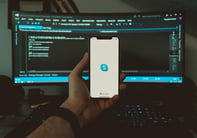Published on
Using Summer as Powerful Predictor of Future Student Success

The Real Reason Why Students Get Summer Off
Summer holds a unique place in the history of the U.S. and education, but not for the reason most people think. Most believe that schools were off in the summer to help with the crops. However, in the early 1800s, children in rural America were needed more for spring planting and fall harvesting than in the summer. In fact, children in urban areas often went to school year-round.
In the mid-1800s, with the advancement of uniform schooling, wealthy urbanites argued that not only did children need rest from being overworked but that they were suffering in hot, non-air-conditioned schools. Even doctors warned that too much schooling could lead to nervous disorders or mental fatigue. Air conditioning did not become common in most schools until the 1990s (I didn’t have it in my high school in the 1980s, and school ended in mid-June, when it could be 100 F).
What Is Summer Learning Loss?
Summer learning loss, or the summer slide, refers to the decline in academic skills and knowledge that students may experience during the summer break when they are not engaged in formal education. This disparity is even greater for low-income students, as their parental oversight and enrichment activities (camps, trips, etc.) do not match those of wealthy children. One study showed that by the end of fifth grade cumulative summer learning losses can leave low-income students two to three years behind their peers.
Addressing Summer Doldrums
Up until the late 1990s, most universities sponsored orientation programs the week before the semester started, which allowed students to have their summers to do whatever they wanted. When I went to college in the late 1980s, the three or four days of August orientation were bliss because there was no homework, and it seemed like everyone was enjoying their newfound freedom by partying. I don’t remember anything educational, but I do remember UB40 and Bruce Hornsby in concert!
At some point, universities that were losing out on top students to colleges with better reputations, which is what all early college rankings were based on, began sponsoring orientation in July. Not only were students more likely to quickly acclimate to and enjoy college but they were less likely to attend another college’s summer orientation and decide that they should go there instead.
One Story of Consistent, Intentional and Meaningful Summer Connection
When I began overseeing a new student programs department in 2010, I stepped into a high-functioning orientation system. We had moved a two-day, one-night, academic orientation from July to June, bringing new students and parents to campus right after high school graduation to get them excited and enroll in all their classes two months in advance. Students knew that the sooner they came to June orientation, the better the pick of fall classes they would have. So, we had parents and students anxiously awaiting the day in February where we opened online registration for June orientation. Within a day, they would quickly fill up the first couple of our ten, 300-student orientation sessions.
Second, we offered a five-day, four-night extended orientation in June and July, where we invited only the students and offered them the closest thing to a Disneyland experience we could. That experience included putting them up in some of our nicest residence halls, bringing in some of the most entertaining faculty and renting travel buses for a road trip to our original campus, where we served them a Texas BBQ dinner and had them walk silently down a luminaire-lined path at dusk for a special ceremony. As they walked under the original campus arches, we gave them a one-of-kind football jersey with their graduation year and personally selected nickname on the back.
Having discovered that we yielded and retained students who attended this extended orientation, called Line Camp, at percentages much higher than those students who did not attend, the university subsidized over 75% of the cost of the experience. We even had athletic coaches at a Big XII Conference institution sending their recruited athletes to our extended orientation to help seal the deal.
In August, we offered the component of our summer program, Welcome Week, a multiday experience that further accelerated students’ social and academic integration to campus. By the time students returned to college for Welcome Week (and ultimately the start of college), they had been chatting in online groups for two months and often ran to hug each as they arrived. It was a dramatic shift from the nervous and scared freshman I remember seeing when I was dropped off at college. These students were counting down the days to when they would be back at college with their Line Camp friends.
We supplemented these three summer experiences by designing, in conjunction with a third-party company, a customized series of online modules that further communicated our core messages from the in-person experiences. Last but certainly not least, we spent much of the academic year running an extremely competitive process for selecting a group of about 50 summer student leaders who took a spring semester three-credit leadership class that taught them how to build strong relationships and engage with small groups of students throughout the summer. These student leaders were paid well for their work serving on the front lines of student interaction in the summer.
Although we started with four full-time professionals when I arrived in 2010, by the time I left we had eight full-time staff overseeing these experiences. Our annual budget was several million dollars (including salaries).
I don’t share this because I want you to replicate the work of the last example. It was summer engagement on steroids, and the university was generous in its support of our efforts. That said, we were careful to involve university leaders and board members in many of our highest-profile summer events, resulting in many of them catching the spirit and wanting to further financially support our efforts (some of our events allowed for only 2-3 specially invited guests, and I, as dean, would narrate and shepherd them through the experience).
What Are Your Summer Touchpoints?
I say all of this because I want us to think about the intentionality, personalization and comprehensiveness of our summer touchpoints for students. To help us do this, I created an Inventory of Summer Engagement Touchpoints that I suggest we ask ourselves. In answering these questions, ideally in a small group of your summer orientation champions, you should be able to identify where you are doing well and where you have room to improve.
Inventory of Summer Engagement Touchpoints
Outreach
- Who has access and when do they have access to incoming student emails?
- Who is reaching out to incoming students? When and how often are they reaching out?
- Who has studied the overall content of the messages incoming students receive from the university? What are the major messages students receive?
- Who has taken a comprehensive look at the number of emails and other outreach incoming students receive from the university in the summer? Has anyone sought to pace outreach so as not to overwhelm students?
- Who is measuring and evaluating the extent to which students open and read summer messaging?
- Have you tried to assess if students remember what you were trying to communicate when they come to college?
Resources
- What university resources (staff, websites, etc.) are shared with students in the summer? What resources are not shared that might benefit students?
- What resources do students actually access and use? Has anyone tracked website hits, phone calls, chatbots, etc. to see what they’re viewing, asking and requesting?
- Has anyone organized a list of commonly asked student questions in the summer? What do these questions or electronic queries tell us about what we need to do a better job of communicating?
- When we examine how we present the most requested topics to students, are there methods for more effectively sharing this information that might improve student satisfaction and understanding?
Academic/Career Prep
- What tools does the university provide to help students in the summer (or earlier) to identify their preferred major and courses of study?
- What tools does the university offer to give students a realistic perspective on the careers that might emerge their preferred majors?
- How does the university use student interest in majors, courses and careers to improve the summer advising experience?
- Who from the university is having a real-time, in-person or video conversations with students to demonstrate the university’s interest in students’ potential majors and careers?
- Has the university tapped into the wide array of AI-supported academic and career guidance to increase impactful summer student touchpoints and strengthen meaningful advising?
Wrap Up
I hope your university’s answers to these questions help you offer a more holistic, personalized and intentional investment in your incoming students’ summer experience. I can assure you that if you do focus on these questions your students will not only begin to realize that you sincerely care about their college experience but be more excited than ever to come to college and discover even more meaningful connections in their new home.



